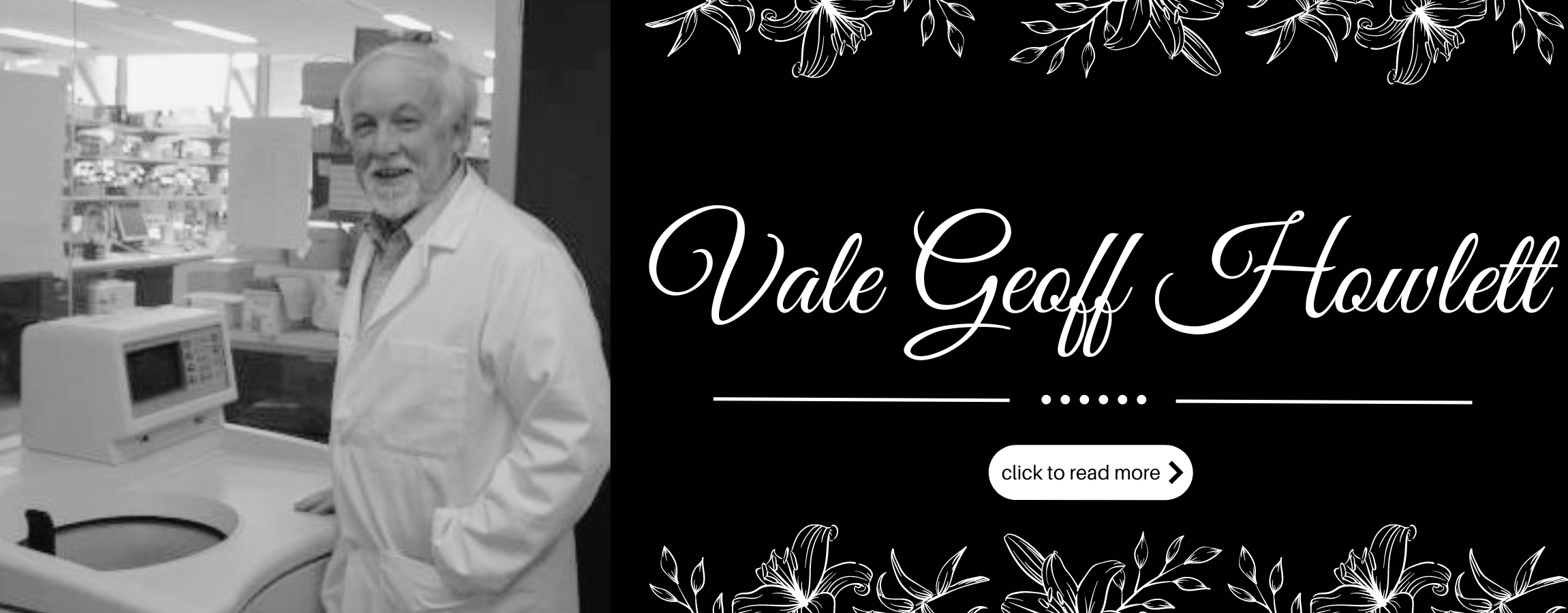Geoff Howlett, a member of the Biochemistry and Molecular Biology Department from 1978 until his retirement in 2013, died on 19 August 2023. During his career, he made major contributions to physical biochemistry, particularly the understanding of how proteins fold and interact. He completed his Bachelor of Science (Honours) in Biochemistry in 1969. His PhD on sedimentation equilibrium of lysozyme under the supervision of Laurie Nichol and Bill Sawyer was awarded at the University of Melbourne in 1972.
Geoff led efforts within Australia on using analytical ultracentrifugation to analyze interacting macromolecules. He became interested in this approach during his PhD using the “Model E” analytical ultracentrifuge, which was developed after the Second World War and was based on jet engine design and capable of very high rotational speeds (up to 60000 rpm). He further advanced his knowledge of this technology during his postdoctoral research with Howard Shachman at the University of California Berkeley from 1973-76, where he studied changes in the structure of the 12-subunit enzyme, aspartate transcarbamylase.
He returned to Australia in 1976 for a research fellowship at La Trobe University, and in 1979, he was appointed lecturer back at the University of Melbourne in the Department of Biochemistry. In the early 1990s, a new, more compact, and easier-to-use analytical ultracentrifuge (the XL-A) was developed, and the Biochemistry Department acquired one of the first ones in Australia. With widespread interest in this new model, he developed many collaborations with colleagues keen to exploit this equipment to analyze the molecular masses and heterogeneity of proteins and protein complexes. In the mid to late 90s, he studied the interaction of lipoproteins, and blood lipid-protein complexes. He used biophysical approaches to understand how the protein components bound to the lipids and to define the stoichiometry of these components. In the late 90s and early 2000s, he examined how these protein components formed amyloids, aggregates of misfolded fibrillar structure. Geoff pioneered studies using the analytical ultracentrifuge to understand the heterogeneity of fibril sizes and their formation kinetics. This research on amyloids sustained his career until his retirement in 2013.
Over his career, Geoff undertook many sabbatical visits to outstanding scholars in the UK and the US. This reflected his international perspective to research – building networks with leading thinkers in the field. Geoff attended the second Lorne Protein Conference in 1977 and became enamored with the scope and quality of the meeting. He then attended 35 annual meetings in a row and played key roles on the organizing committee between 1980 and 2010. His legacy is in the people he trained and the ethos of his trainees. He inspired bright thinkers in his laboratory. Many of his former PhD students or postdocs have gone on to their own distinguished careers, including Cait MacPhee, Mike Griffin, Matt Perugini, Ben Atcliffe, Danny Hatters, Cameron Stewart, and Katrina Binger.
He is survived by his wife, Barbara, and daughters, Lisa and Melanie, as well as four grandchildren.
IMAGE COURTESY OF: Bio21 Institute
